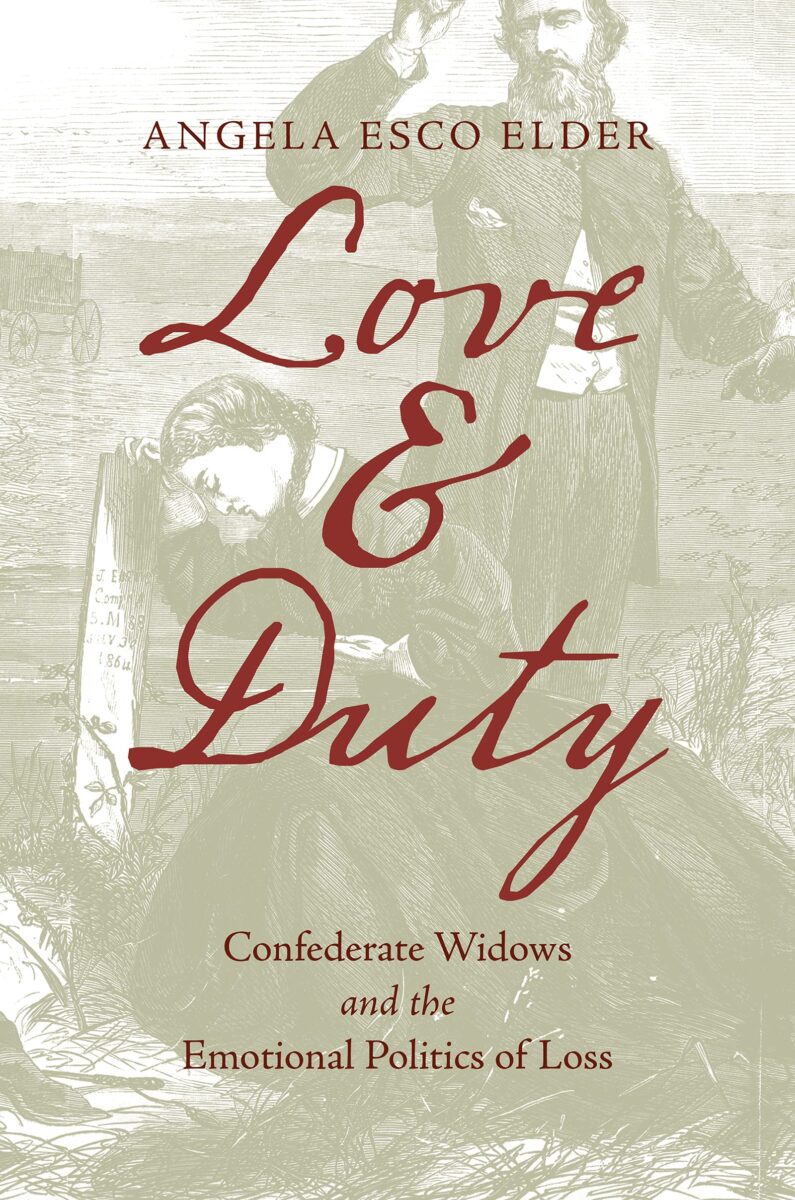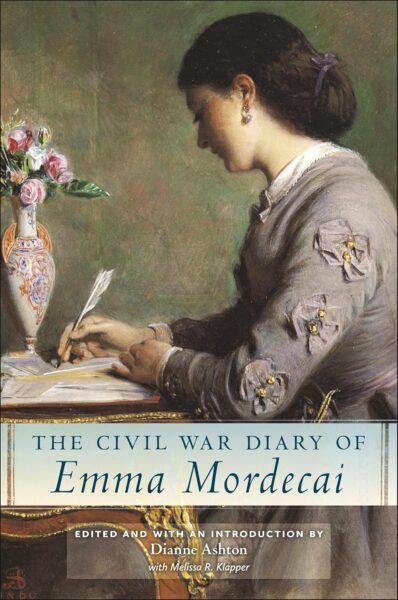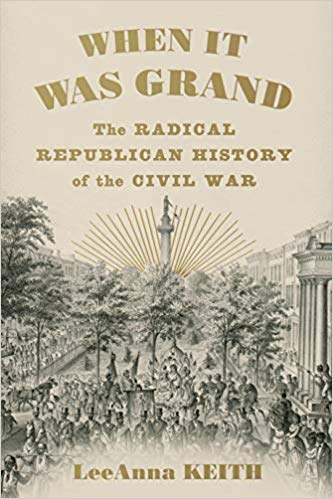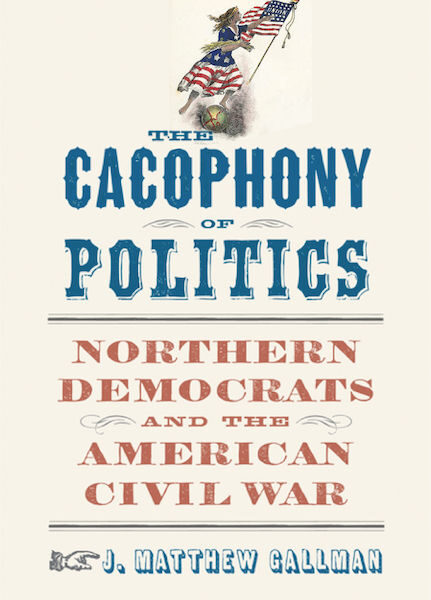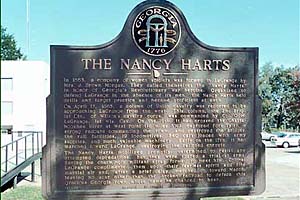Historian Angela Esco Elder’s debut monograph joins a growing body of scholarship probing the lived consequences of the Civil War. Complementing recent work by Diane Miller Sommerville, Brian Craig Miller, and James Broomall, Love & Duty examines the complicated emotional and political relationships between Confederate widows and the Confederate state” (2). Taking her methodological cues from scholars like William Reddy and Susan Matt, Elder delineates but then reaches beneath cultural expectations for mourning and grief. Recovering the range of ways that women grappled with loss and suffering, she renders a more textured—and ultimately more human—history of Civil War widowhood. Not unlike other scholars (among them Michael Woods, Christopher Hager, and Stephen Berry) who have exploited the history of emotions approach, Elder finds that “the political was personal, and the personal political” (5).
After surveying “love and loss in the antebellum South” in an opening chapter, Elder characterizes wartime marriage patterns (14, 41). As Confederates mobilized for war, many “young white women…rush[ed] to the altar” in ways that challenged white southern courtship and marriage conventions (47). For women who bade farewell to new partners rushing off to battle, “mourning began before husbands died” (61). Overwhelmed by the unthinkable demands of managing enslaved persons—annexed by fear, apprehension, and worry—the war disrupted domestic life in the South. Death invaded a world already marked by physical destruction and temporal dislocation.
When husbands died, widows were expected to don the literal and metaphorical garb of mourning. Writers, editors, politicians, and some families demanded self-effacing widows who embraced their new identity (82-83). Yet emotions did not always yield to cultural conventions. Nor did grieving women feel under further obligation to “support the legitimacy of the Confederacy” (82).
Not unlike Martha Hodes, whose Mourning Lincoln [2015] reached beneath official proclamations to recover the messiness and complexity of responses to Lincoln’s assassination, Elder recovers the welter of raw and conflicting emotions expressed by Confederate widows (92). “From shock to denial, depression to acceptance,” the author writes, “wives came to terms with their new identity as widows in different ways and at different speeds” (78). Elder tallies the diverse ways women grappled with the loss of a loved one—from social functions and scrapbooking to child-rearing and remarriage. As the author writes, “exploring the varied emotional responses of Confederate widows during the war, alongside the expectations place upon them, reveals the complicated politics of mourning that lay beneath official tributes to women performing that work” (107). From negotiating sometimes difficult relationships with in-laws to rebuilding domestic lives, Elder demonstrates at once the war’s emotional toil and emotional toll.
When they have featured in the literature, Confederate widows have often been portrayed as midwives of the Lost Cause. One of Elder’s most important interventions, then, is her finding that so many grieving, white southern women snubbed Civil War memory work. While Mary Anna Jackson, Flora Cooke Stuart, and Emilie Todd Helm achieved a certain “celebrity” as Confederate widows—riding what the historian James Marten has called the “old soldier’s circuit”—far more widows were both too penurious and too “emotionally spent” to engage in memorial activities (132, 149). “White women,” she concludes, “did not seamlessly work together to create a Lost Cause ideology” (132). Indeed, “the most active members of Ladies’ Memorial Associations were either married women or women widowed after the war, not widows who lost husbands during the actual war” (143).
Drawing on an impressive array of personal manuscripts and scrapbooks, Love & Duty extends recent scholarship on the diversity among women’s experiences during the Civil War and its long aftermath. Now, the field awaits similar monographic treatment of Union widows.
Brian Matthew Jordan is the author of Marching Home: Union Veterans and Their Unending Civil War (2015).
Related topics: women
